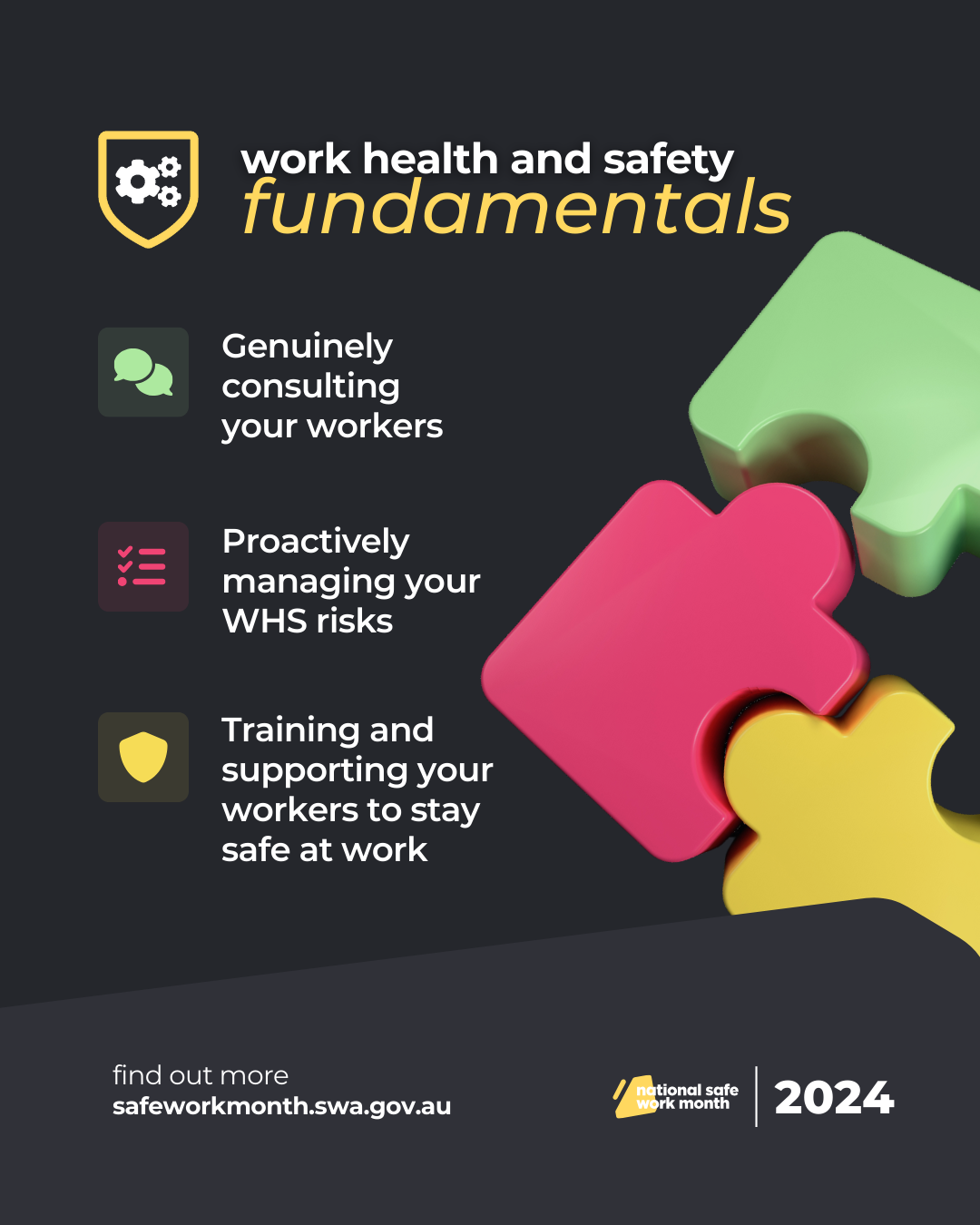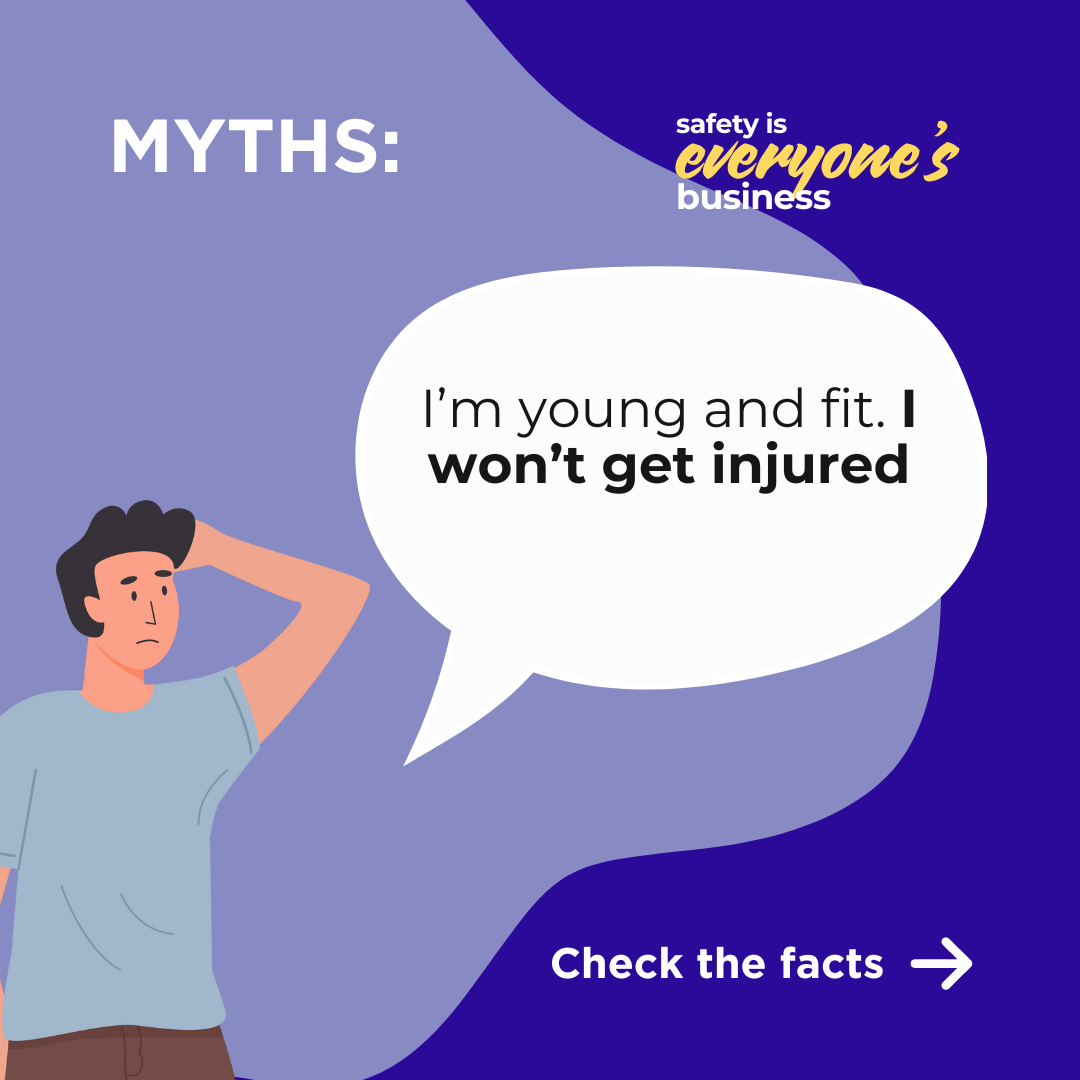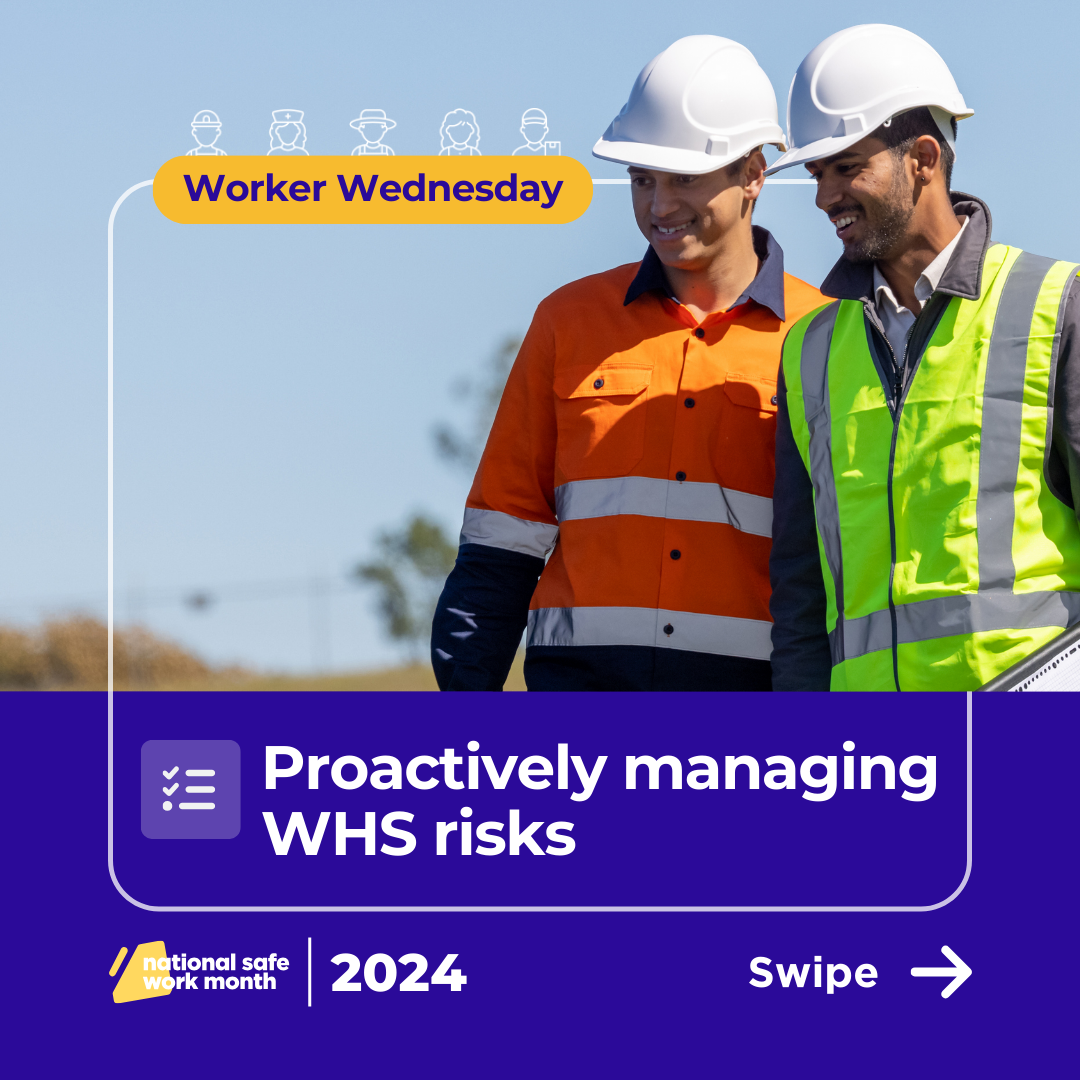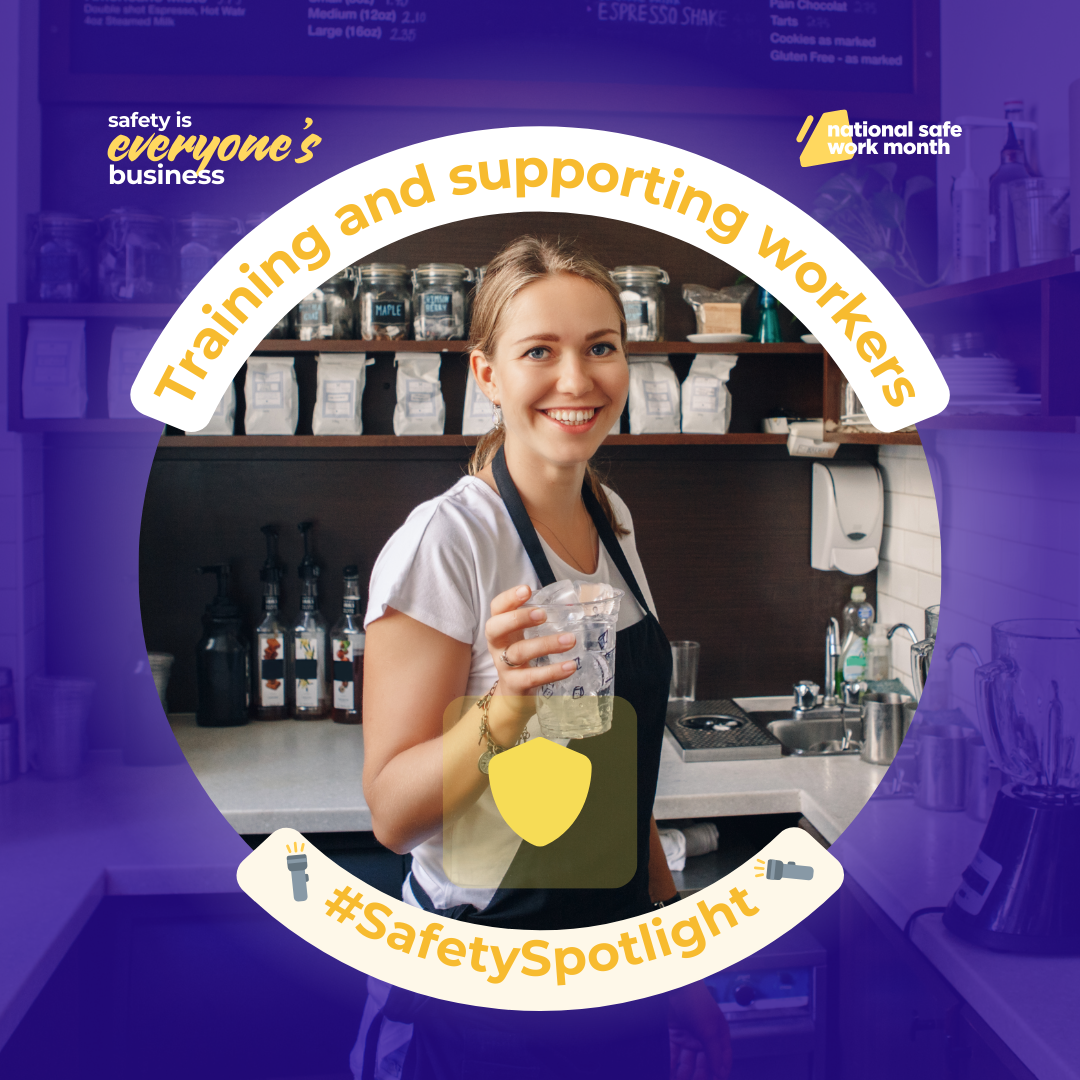This week we get back to basics by unpacking the fundamentals of good WHS practice.
The WHS fundamentals are essential for everyone to understand. They incorporate proactively managing WHS risks, genuine consultation with workers, and training and supporting workers to stay safe at work.
The WHS fundamentals help you to consider health and safety in everything you do and every decision you make. If workers see how important safety is to you, they are more likely to follow safety procedures and raise safety issues with you – safety is everyone’s business!
This National Safe Work Month, take the time to talk about WHS with workers, through a SafeTea chat. Unpack the fundamentals and make WHS part of your business every month of the year.
Proactively managing your WHS risks
You have a duty to eliminate or minimise health and safety risks as much as you reasonably can to keep workers and others (e.g. visitors) safe.
Safety doesn’t happen by chance or guesswork. You must proactively identify situations (hazards) that could cause harm, then make changes to eliminate or minimise the risk of harm happening. Don’t wait for something to go wrong before you take action.
Take action and manage WHS risk!
Identify and assess – talk to workers (consult), look for hazards in the workplace, assess the risks – how serious harm could be, how it might happen, how likely it is.
Control – eliminate the risks (e.g. stop doing the task or re-design) if possible or minimise the risks as much as you reasonably can using control measures.
Monitor and review – monitor closely and review control measures to make sure they are working well and there is nothing more or different you need to do.
Remember you must consult with workers and take their views into account when taking action to manage WHS risks.
We will explore WHS risk management in more detail in week 3. Find out more about managing WHS risks.
Genuinely consulting your workers
Genuinely consulting with workers is a legal requirement.
Workers have important ‘on the job’ insights and experience that can help you understand the workplace risks and make better decisions about safety. Safety is everyone’s business!
Talk openly with your workers and take their views into account. If your workplace has health and safety representatives, they need to be consulted too. Encourage everyone to participate – workers are more likely to adopt safe working practices if they are part of the decision-making process.
Consultation doesn’t have to be complicated. It can occur in different ways depending on what suits your workplace and workers. Find out more about consulting with your workers.
Training and supporting your workers to stay safe at work
Under the WHS laws, workers must be provided with information, training, instruction or supervision to help them remain healthy and safe in the workplace. New and inexperienced workers are particularly at risk.
You must:
- Provide the information and training workers need to work safely before they start working.
- Induct new workers with information on how to perform work safely and what procedures they need to know.
- Information should be clear so your workers understand it.
- Culturally and linguistically diverse workers may require translations, diagrams and demonstrations of tasks.
- Provide ongoing supervision – check competency before reducing supervision.
- Regularly correct unsafe practices and ensure workers understand any new or changed instructions.
- Provide ongoing information and training to keep workers up to date.
- Make sure workers have the things they need to do the job safely and aren’t encouraged to take short cuts.
Some specific requirements for induction, training and supervision apply to certain industries and hazards, including construction, high risk work, diving work, operation of certain plant, hazardous chemicals and asbestos. Find out more about training and supervision.
Learn more
WHS fundamentals
- Managing WHS risks | Safe Work Australia
- Model Code of Practice: How to manage work health and safety risks | Safe Work Australia
- Identify, assess and control hazards | Safe Work Australia
Consulting your workers
- Consultation | Safe Work Australia
- Consultation checklist | Safe Work Australia
- How to consult your workers | Safe Work Australia
- Consulting with workers – Duties for PCBUs | Safe Work Australia
Training and supporting your workers
- Training and supporting your workers to stay safe at work | Safe Work Australia
- Provide induction and workplace safety training for new workers | Safe Work Australia
- Train workers for their specific tasks | Safe Work Australia
- Provide ongoing training and supervision | Safe Work Australia
- Duties of a PCBU | Safe Work Australia
- WHS outcomes for apprentices and trainees | Our Data. Your Stories
Stay updated
To keep updated about National Safe Work Month, follow us on social media and subscribe to our mailing list. When subscribing, be sure to check ‘National Safe Work Month’.
Subscribe | Facebook | LinkedIn | Instagram | YouTube | #SafeWorkMonth #SafetyIsOurBusiness





